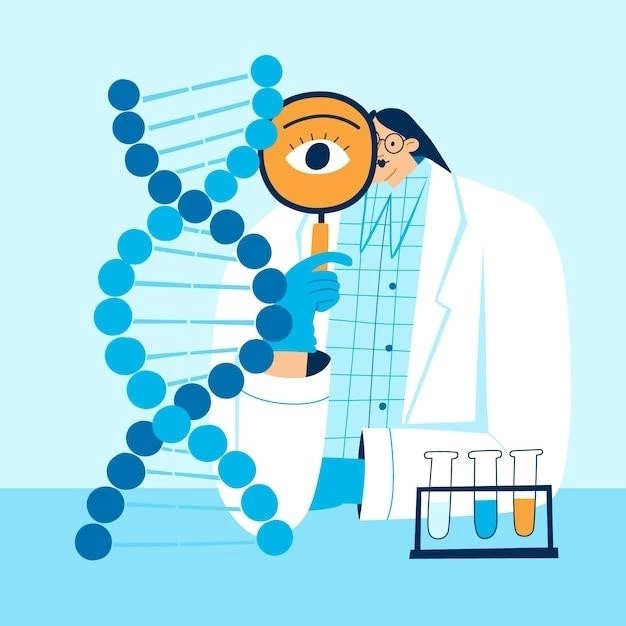Article Plan⁚ Disease ⎼ Trismus Pseudocamptodactyly Syndrome
Overview of Trismus Pseudocamptodactyly Syndrome
Trismus Pseudocamptodactyly Syndrome, also known as distal arthrogryposis type 7, is a rare genetic disorder characterized by the inability to open the mouth fully (trismus) and the presence of pseudocamptodactyly – a condition where wrist dorsiflexion leads to involuntary finger contractures. This syndrome, often inherited in an autosomal dominant pattern, can present challenges in everyday activities such as speaking, eating, and dental care due to limited mouth opening.
Individuals affected by Trismus Pseudocamptodactyly Syndrome may exhibit manifestations like pseudocamptodactyly, mild foot deformities, short stature, and restricted mobility due to shortened muscles and tendons. The syndrome, caused by mutations in the MYH8 gene, poses complications related to hand, foot, and mouth anomalies. Diagnosis involves a multidisciplinary approach with diagnostic teams comprising genetics and orthopedics.
Support for individuals and families coping with Trismus Pseudocamptodactyly Syndrome can be found through various organizations that offer resources and guidance. Recent studies have shed light on the genetic basis of this syndrome, emphasizing the need for early identification and management to address the associated musculoskeletal issues. Awareness and understanding of this rare disorder are essential for improved care and support.

Clinical Manifestations and Characteristics
Trismus Pseudocamptodactyly Syndrome, also known as distal arthrogryposis type 7, presents with distinct clinical manifestations. This rare genetic disorder primarily manifests as an inability to fully open the mouth (trismus) and pseudocamptodactyly, a condition involving finger flexion during wrist dorsiflexion.
Individuals with Trismus Pseudocamptodactyly Syndrome may exhibit varied symptoms such as limited mouth opening, involuntary finger contractions, mild foot deformities, and short stature. These manifestations are attributed to shortened muscles and tendons, leading to restricted mobility in the affected areas.
The syndrome’s clinical presentation can complicate daily activities like speaking, eating, and dental care due to the challenges posed by limited mouth opening. As a rare autosomal dominant disorder, Trismus Pseudocamptodactyly Syndrome requires specialized diagnostic evaluation and management to address the unique musculoskeletal issues it presents.
Understanding the specific clinical characteristics of Trismus Pseudocamptodactyly Syndrome is crucial for healthcare professionals and families affected by this condition to navigate its complexities effectively. Early diagnosis and comprehensive care strategies play a significant role in enhancing the quality of life for individuals living with this rare genetic disorder.
Genetic Basis and Inheritance
Trismus Pseudocamptodactyly Syndrome, also known as distal arthrogryposis type 7, is an autosomal dominant disorder primarily caused by mutations in the MYH8 gene located on chromosome 17 (17p13.1); These mutations, such as the p.Arg674Gln mutation, have been identified in families with Belgian descent and are associated with the syndrome’s characteristic features.
Individuals with Trismus Pseudocamptodactyly Syndrome inherit the genetic mutation from their parents, following an autosomal dominant inheritance pattern. This means that a person only needs one copy of the mutated gene to express the syndrome. The genetic basis of this rare syndrome highlights the importance of genetic testing and counseling for affected individuals and their families.
Understanding the genetic underpinnings of Trismus Pseudocamptodactyly Syndrome is crucial for accurate diagnosis, risk assessment, and family planning. Genetic testing plays a significant role in confirming the presence of the MYH8 gene mutation associated with this disorder, enabling healthcare providers to provide tailored management strategies based on the individual’s genetic profile.
Diagnosis and Diagnostic Teams
Diagnosing Trismus Pseudocamptodactyly Syndrome involves a comprehensive evaluation by diagnostic teams that typically include genetic specialists and orthopedic professionals. These teams collaborate to assess the clinical manifestations of the syndrome, conduct genetic testing to identify mutations in the MYH8 gene, and evaluate the inheritance pattern within families.
Diagnostic criteria for Trismus Pseudocamptodactyly Syndrome often involve identifying key symptoms like limited mouth opening (trismus) and pseudocamptodactyly, which require specialized expertise to differentiate from other genetic disorders. Advanced imaging techniques, genetic analysis, and physical examinations are integral to confirming a diagnosis and devising a tailored management plan.

By assembling diagnostic teams with diverse medical backgrounds, individuals suspected of having Trismus Pseudocamptodactyly Syndrome can benefit from a multidisciplinary approach that considers the complex interplay of genetic factors and musculoskeletal abnormalities characteristic of this rare disorder. Early and accurate diagnosis facilitated by these specialized teams is fundamental in providing appropriate care and support.
Complications and Management
Trismus Pseudocamptodactyly Syndrome poses various complications due to its unique characteristics, such as the inability to open the mouth fully (trismus) and the presence of pseudocamptodactyly. These complications can impact activities like speaking, eating, and dental care, requiring tailored management strategies to address the associated challenges.
Managing Trismus Pseudocamptodactyly Syndrome involves a multidisciplinary approach that focuses on addressing the musculoskeletal issues resulting from shortened muscles and tendons. Treatment plans may include physical therapy to enhance mobility, orthopedic interventions to manage hand and foot deformities, and regular dental care to mitigate issues related to limited mouth opening.
Individuals with Trismus Pseudocamptodactyly Syndrome may benefit from early identification of symptoms and proactive management strategies that aim to improve mobility, enhance quality of life, and address any functional limitations caused by the syndrome’s complications. Ongoing monitoring and personalized care are essential components of managing this rare genetic disorder.
Distal Arthrogryposis Type 7 (Trismus-Pseudocamptodactyly)
Distal Arthrogryposis Type 7٫ also known as Trismus-Pseudocamptodactyly Syndrome٫ is a rare genetic disorder characterized by the inability to fully open the mouth (trismus) and the presence of pseudocamptodactyly٫ where wrist dorsiflexion leads to involuntary finger contractures. This syndrome٫ associated with distal arthrogryposis٫ poses challenges in everyday activities due to limitations in mouth opening and finger movements.
Trismus-Pseudocamptodactyly Syndrome manifests as a combination of hand, foot, and mouth anomalies, with symptoms like limited hand and foot mobility, along with restricted mouth opening. The diagnosis of this rare disorder involves recognizing the specific clinical features such as trismus and pseudocamptodactyly, which are essential for differentiating it from other genetic syndromes.
Understanding the distinctive characteristics of Distal Arthrogryposis Type 7 (Trismus-Pseudocamptodactyly) is crucial for healthcare professionals to provide accurate diagnoses and tailored management strategies for individuals affected by this rare genetic syndrome. Early identification and comprehensive care play a significant role in addressing the musculoskeletal issues associated with this condition.
Support Resources and Organizations
For individuals and families affected by Trismus Pseudocamptodactyly Syndrome, accessing support resources and organizations can provide valuable guidance and assistance. Various support groups focus on rare genetic disorders like Trismus Pseudocamptodactyly Syndrome, offering a platform for sharing experiences, accessing information, and connecting with others facing similar challenges.
Support organizations dedicated to rare genetic syndromes often provide educational materials, advocacy, and resources to help navigate the complexities of managing Trismus Pseudocamptodactyly Syndrome. By engaging with these organizations, individuals can find a supportive community that understands the unique aspects of living with a rare disorder and offers valuable support networks.
Moreover, financial resources and assistance programs may be available through specific support organizations to help individuals and families alleviate the financial burden associated with managing Trismus Pseudocamptodactyly Syndrome. These resources aim to enhance the quality of life for those impacted by rare genetic disorders by offering practical support and guidance.
Research and Recent Studies
Recent studies have furthered our understanding of Trismus Pseudocamptodactyly Syndrome, also known as distal arthrogryposis type 7, shedding light on its genetic underpinnings and clinical manifestations. The identification of mutations in the MYH8 gene, particularly the p.Arg674Gln mutation prevalent in certain populations, has been instrumental in diagnosing this rare autosomal dominant disorder.
Researchers have delved into the complexities of Trismus Pseudocamptodactyly Syndrome, highlighting its distinct features such as limited mouth opening (trismus) and pseudocamptodactyly, which involve involuntary finger contractions during wrist movement. These studies emphasize the importance of early diagnosis and specialized management approaches to address the unique challenges presented by this syndrome.
Ongoing research endeavors aim to improve diagnostic techniques for Trismus Pseudocamptodactyly Syndrome, enhance our knowledge of its clinical characteristics, and explore potential therapeutic interventions to alleviate the musculoskeletal complications associated with this rare genetic disorder. By advancing research efforts, the medical community strives to offer more effective treatments and support for individuals living with Trismus Pseudocamptodactyly Syndrome.
